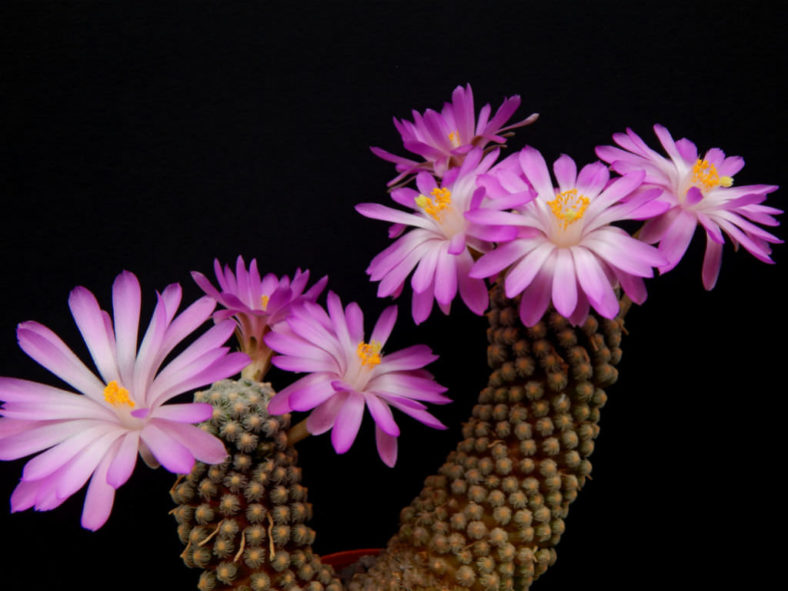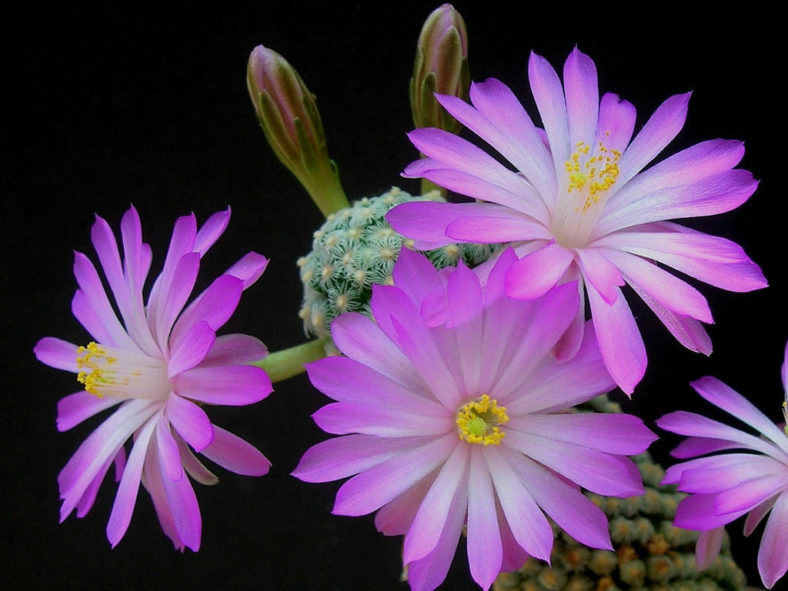Scientific Name
Cochemiea theresae (Cutak) Doweld
Synonym(s)
Mammillaria saboae var. theresae, Mammillaria theresae
Scientific Classification
Family: Cactaceae
Subfamily: Cactoideae
Tribe: Cacteae
Genus: Cochemiea
Etymology
The specific epithet "theresae" (pronounced "thee-REH-say") honors Theresa Bock, who, with her husband John, discovered this species in 1966, on the Coneto Mountains in Durango, Mexico.
Origin
Cochemiea theresae is native to Mexico. It occurs on limestone outcrops in the Corneto Pass in Durango.
Description
Cochemiea theresae, formerly known as Mammillaria theresae, is a charming small cactus with subspherical to cylindrical, usually solitary or sparingly clustered stems covered with short, white to yellowish-white spines. The stems are green with a red or magenta hue. They can grow up to 2 inches (5 cm) tall and 1.2 inches (3 cm) in diameter.
The flowers are funnel-shaped, pink with pale yellow stigmas, and can reach a length of 2 inches (5 cm) and a diameter of 1.4 inches (3.5 cm). They appear mainly in spring but also sporadically throughout summer. This species has cryptocarpic fruits, meaning fruit and seeds are produced and retained inside the stems. They are club-shaped and can measure up to 0.4 inches (1 cm) in length.
Forms

Hardiness
USDA hardiness zones 10a to 11b: from 30°F (-1.1°C) to 50°F (10°C).
How to Grow and Care
To encourage better flowering, allow the plants to enjoy a cooling period in the winter and suspend watering. Unlike many other cacti, which use their ribs as storage devices, Mammillaria features raised tubercles, from which spines emerge. When you water, the tubercles expand to allow for increased water storage. The flowers appear from these tubercles' axils on the previous year's growth, which accounts for their interesting halo effect. The cactus mustn't be exposed to prolonged dampness and standing water. Never let your cactus sit in a dish of water. Lastly, ensure to fertilize during the growing season for the best results.
Repot as needed, preferably during the warm season. To repot Mammillaria, ensure the soil is dry before repotting, then gently remove the pot. Gently remove the old soil from the roots, discarding any rotted or dead roots. Treat any cuts with a fungicide. Place the plant in its new pot and backfill it with potting soil, spreading the roots as you repot. Leave the plant dry for a week or so, then water lightly to reduce the risk of root rot.
See more at How to Grow and Care for Mammillaria.
Links
- Back to genus Cochemiea
- Succupedia: Browse succulents by Scientific Name, Common Name, Genus, Family, USDA Hardiness Zone, Origin, or cacti by Genus
Photo Gallery
Click on a photo to see a larger version.


